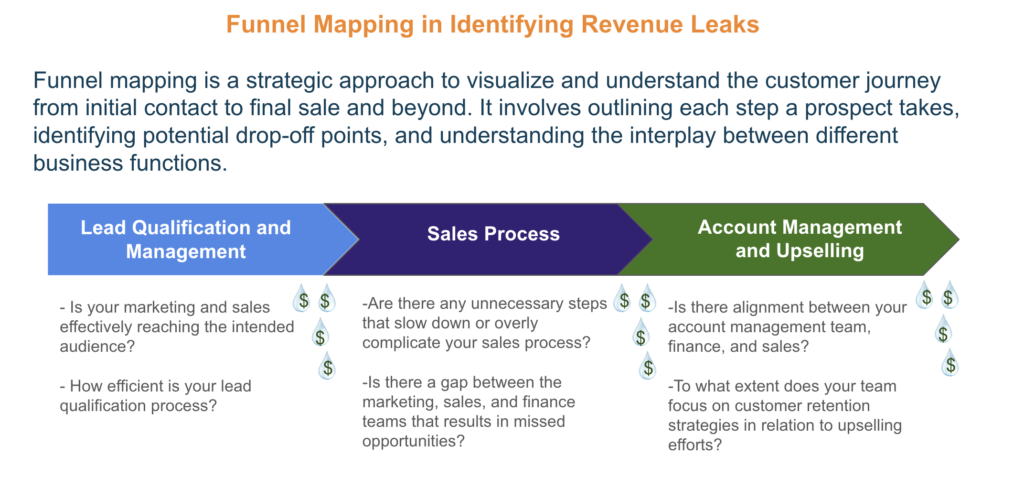
In today’s rapidly evolving business landscape, effectively managing revenue leakage is critical for maximizing profitability and ensuring sustainable growth.
Let’s explore a comparative analysis of revenue leakage control methods, contrasting traditional approaches with the innovative Revenue Captain (RevCap).
RevCap-based solutions:
- Data Accuracy:
- Traditional Approach: Response to revenue leakage incidents may be delayed due to manual detection methods and bureaucratic processes.
- RevCap-Based Approach: Offers real-time alerts and automated responses, enabling swift action to mitigate potential losses and prevent recurrence.
- Speed of Response:
- Traditional Approach: Response to revenue leakage incidents may be delayed due to manual detection methods and bureaucratic processes.
- RevCap-Based Approach: Offers real-time alerts and automated responses, enabling swift action to mitigate potential losses and prevent recurrence.
- Scalability:
- Traditional Approach: Limited scalability due to reliance on human resources and manual processes, posing challenges in handling large volumes of data and complex revenue streams.
- RevCap-Based Approach: Highly scalable, capable of analyzing massive datasets and adapting to evolving business needs without requiring significant additional resources.
“Revenue leakage is akin to a hidden iceberg beneath the surface of your business operations. Addressing it isn’t just about plugging holes; it’s about navigating the depths to uncover untapped potential and steer your organization toward greater profitability and success”.

- Cost-Efficiency:
- Traditional Approach: Often incurs high costs associated with manual labor, time-intensive audits, and inefficient processes, leading to overspending.
- RevCap-Based Approach: Breaks through the glass ceiling by offering cost savings through automation, optimization, and improved resource allocation, minimizing revenue leakage-related expenses.
- Sales Forecasting & Predictive Capabilities:
- Traditional Approach: Typically lacks predictive capabilities, relying primarily on historical data and reactive measures.
- RevCap-Based AI Approach: Utilizes predictive analytics to forecast revenue trends, identify potential leakage risks, and proactively implement preventive measures, taking preemptive actions to mitigate potential losses.
- Customization and Adaptability:
- Traditional Approach: Often rigid and inflexible, with limited ability to tailor strategies to specific business needs or changing market conditions.
- RevCap-Based Approach: Offers flexibility and adaptability, enabling customized solutions and dynamic adjustments to revenue management strategies based on real-time insights, facilitating proactive problem-solving.
- Integration with Business Processes:
- Traditional Approach: May face challenges integrating revenue leakage control measures with existing business processes and systems, resulting in inefficiencies and oversight gaps.
- RevCap-Based Approach: Seamlessly integrates with existing workflows and technologies, providing holistic visibility into revenue streams and promoting cross-functional collaboration, enhancing overall business agility and adaptability.
In summary, while traditional approaches to revenue leakage control rely on manual methods and retrospective analysis, RevCap-based solutions leverage advanced analytics, automation, and predictive modeling to deliver faster, more accurate, and cost-effective solutions.
By embracing AI-driven technology, businesses can proactively identify and address revenue leakage risks, optimize revenue streams, and drive sustainable growth in today’s dynamic marketplace. However, it’s essential to recognize that taking proactive actionable steps from lead management to closing a deal can significantly mitigate revenue leakage.
Why wait until the end to address potential revenue losses when proactive measures can be implemented throughout the sales process?
Companies must assess their current revenue leakage percentage. If unsure, I encourage reaching out to your RevOps team or contacting us for assistance.
We have helped numerous organizations tackle revenue leakage issues, and we can provide valuable insights and solutions tailored to your specific needs. Let’s work together to ensure your business maximizes its revenue potential and achieves sustainable growth.
